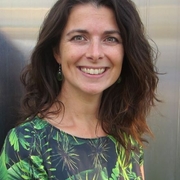- Level Foundation
- Duration 20 hours
- Course by Capitals Coalition
-
Offered by

About
The aim of the course is to introduce businesses employees to the Capitals Approach and help them to get started with integrating natural, social and human capitals into business decision-making. This course is an introductory course; no prior knowledge of natural, human or social capital is needed. The course provides a comprehensive introduction to the capitals approach and to undertaking a natural capital assessment, and is available for all employees and leaders, sustainability practitioners, procurement officers, accountants, human resources, auditing, strategy, risk management and finance departments. The material is covered in good depth and will require time and commitment to learning. Due to its comprehensive character, the course may be less suited to C-level management. The course consists of four modules and its structure follows the internationally recognized Natural Capital Protocol and Social and Human Capital Protocols. The course features many business examples to demonstrate why and how other businesses have integrated natural, social & human capital impacts and dependencies into their decision-making and management practices. The first two modules guide learners through risks and opportunities related to nature, people and society; introduce the concept of a Capitals Approach and present the business case for undertaking an integrated capitals assessment. The third and fourth modules focus specifically on natural capital and how to get started with a natural capital assessment. These modules guide learners along the scoping stage and introduce students to measuring and valuing natural capital. By the end of the course, participants are expected to have learned about the different capitals, why it is essential to embed them into business decision-making, and how to get started with a capitals assessment. Future course specializations will build upon this introductory course, by providing additional content on social and human capital and allowing the learner to go more in depth with the content and application. This course has been developed by the Capitals Coalition, supported by We Value Nature, a collaboration between ICAEW, WBCSD, IUCN & Oppla, with the support of Nature^Squared.Modules
Course introduction
2
Discussions
- (OPTIONAL) Where are you on your journey?
- (OPTIONAL) Starting your capitals journey
3
Videos
- Welcome by Mark Gough - CEO Capitals Coalition
- Paul Polman - Co-author of Net Positive and founder of Net Positive World Movement
- Course Introduction
3
Readings
- Course Acknowledgements
- Learning objectives overall course
- Assignments, Grading and Technicalities
Welcome to module 1
1
Videos
- Welcome
1
Readings
- Learning objectives module 1
Risks and Opportunities
1
Assignment
- Planetary Boundaries
1
Discussions
- (OPTIONAL) Risks and opportunities
2
Videos
- Business risks and opportunities related to nature, people and society
- Interview with Volkert Engelsman, CEO, EOSTA: The business case for including nature, people and society into decision-making
1
Readings
- (OPTIONAL) The global risk landscape continues to shift
The capitals approach and the four capitals
2
Discussions
- (OPTIONAL) Entry points to natural, social and human capital
- (OPTIONAL) Browsing through case studies
1
Videos
- The Integrated Capitals Approach: the Natural Capital Protocol and the Social & Human Capital Protocol
6
Readings
- What is a capitals approach & definitions of the 4 capitals?
- Integrated capitals assessments
- The process and principles of a capitals assessment
- How does this process guide us throughout the course?
- Examples of businesses who have conducted a capitals assessment
- (OPTIONAL) The Capitals Protocols, Business Primers & Case Study Databases
Recap
1
Assignment
- Quiz 1
Impacts and Dependencies
2
Assignment
- Häagen-Dasz on impacts and dependencies
- (OPTIONAL) Impacts and dependencies
2
Discussions
- (OPTIONAL) Impacts and dependencies
- (OPTIONAL) Impacts and dependencies
2
Videos
- Häagen-Dazs on impacts and dependencies
- Impacts and dependencies
1
Readings
- Impacts and dependencies
Recap
1
Assignment
- Quiz 2
Creating value
1
Discussions
- (OPTIONAL) Journey to create the greatest positive value across all capitals
2
Readings
- Journey to create the greatest positive value across all capitals
- (OPTIONAL) Goals, targets and reporting initiatives and standards
Wrapping up
1
Assignment
- Final assessment
2
Discussions
- (OPTIONAL) Key learnings
- (OPTIONAL) Challenge
2
Videos
- Key take-aways
- Next steps
1
Readings
- Key take-aways
Introduction to module 2
1
Assignment
- Recap quiz
1
Videos
- Welcome
1
Readings
- Learning objectives module 2
The process of a capitals assessment
2
Discussions
- (OPTIONAL) Benefits of capitals assessments: Yorkshire Water
- (OPTIONAL) Reflection on Liv Up video
3
Videos
- Liz Barber - CEO Yorkshire Water
- The process of a capitals assessment
- Liv Up - Pedro Alexandre Martins, Innovation and Sustainability Sr. Manager
2
Readings
- Diamond infographic
- (OPTIONAL) Liv Up Capitals' journey
Capital Stock, flow and value
1
Assignment
- Stock, flow and value
1
Discussions
- (OPTIONAL) Stock, flow and value
1
Videos
- Capital stock, flow and value
2
Readings
- Capital stock, flow and value
- (OPTIONAL) Nature-based solutions & natural capital
Risks and opportunities
2
Assignment
- (OPTIONAL) Identifying risks and opportunities
- (OPTIONAL) Risks and risk responses
1
Discussions
- (OPTIONAL) Impacts and dependencies translating into risks and opportunities
1
Videos
- (OPTIONAL) ASN Bank testimonial video
1
Readings
- Risk and opportunity categories
Recap
1
Assignment
- Quiz 1
Business Applications of Natural Capital Assessments
1
Assignment
- Business applications
1
Discussions
- (OPTIONAL) Reflection on Novartis video
2
Videos
- Novartis - Sonja Haut, Head of Strategic Measurement and Materiality
- (OPTIONAL) METRO AG testimonial video
1
Readings
- Business applications
Securing Support for your Assessment
1
Assignment
- Liv Up - Engaging stakeholders
1
Discussions
- (OPTIONAL) Persona action cards 1 minute pitch!
2
Videos
- Liv Up - Pedro Alexandre Martins, Innovation and Sustainability Sr. Manager
- Engaging stakeholders in the decision-making process
1
Readings
- Securing internal support and Persona action cards
Planning the Process
1
Assignment
- Planning the process
2
Videos
- Planning the process
- Interview with Volkert Engelsman, CEO, EOSTA: Tips to get started with your own assessment
1
Readings
- Planning the process
Recap
1
Assignment
- Quiz 2
Wrapping Up
1
Assignment
- Final assessment
1
Discussions
- (OPTIONAL) Challenge
2
Videos
- Key take-aways
- Next steps
1
Readings
- Key take-aways
Introduction to module 3
1
Assignment
- Recap quiz
2
Videos
- Welcome
- (OPTIONAL) Video: quick recap on natural capital & ecosystem services
2
Readings
- Learning objectives module 3
- Diamond infographic
The case for applying natural capital thinking
1
Discussions
- (OPTIONAL) Entry points to natural capital
1
Videos
- The Natural Capital Protocol
1
Readings
- (OPTIONAL) Additional reading on the business case for natural capital & natural capitals assessments
Defining the objective
2
Assignment
- Engaging stakeholders reflection
- (OPTIONAL) Identify a target audience and relevant stakeholders
2
Discussions
- (OPTIONAL) Objective for conducting a natural capital assessment
- (OPTIONAL) Defining objectives
1
Videos
- Defining an objective
1
Readings
- Identify the target audience & stakeholders
Recap
1
Assignment
- Quiz 1
Scope the assessment
2
Assignment
- Reflection on scoping a natural capital assessment
- Scoping an assessment
2
Videos
- Scoping a natural capital assessment
- Yorkshire Water - Phillip Blaen, Sustainability Manager
1
Readings
- Scoping an assessment
Impact and dependency pathways
1
Assignment
- (OPTIONAL) Designing an impact pathway
1
Discussions
- (OPTIONAL) Impact and dependencies
1
Videos
- Impact and dependency pathways
2
Readings
- Impact drivers and dependencies
- Impact and dependency pathways
Determine material impacts and dependencies
2
Assignment
- Identifying material impacts and dependencies
- (OPTIONAL) Materiality exercise for a seafood company
3
Videos
- Defining materiality
- Yorkshire Water - Phillip Blaen, Sustainability Manager
- Interview with Volkert Engelsman, CEO, EOSTA: Defining materiality and working with stakeholders
2
Readings
- Materiality
- (OPTIONAL) Dedicated sector guides on natural capital
Recap
1
Assignment
- Quiz 2
Wrapping up
1
Assignment
- Final assessment
2
Videos
- Key take-aways
- Next steps
1
Readings
- Key take-aways
Introduction to module 4
1
Assignment
- Recap quiz
1
Videos
- Welcome
2
Readings
- Learning objectives module 4
- Diamond infographic
Intro to measure & value
2
Assignment
- Measure and value
- Qualitative, quantitative and monetary
3
Videos
- Gretchen C. Daily, Natural Capital Project, Stanford University
- Measure and value
- Interview with Volkert Engelsman, CEO, EOSTA: Measuring and valuing the impacts
2
Readings
- Measure ≠ Value
- (OPTIONAL) Business examples
Measuring impact drivers and dependencies
3
Assignment
- Quantitative indicators
- Data sources
- Natural capital toolkit
3
Videos
- Holcim - Magali Anderson, Chief Sustainability and Innovation Officer
- Holcim - Renata Pollini, Head of Nature
- Measuring impact drivers and dependencies
5
Readings
- Steps to complete before measurement
- Map your activities against impact drivers and/or dependencies
- Define which impact drivers and/or dependencies indicators you will measure
- Identify how you will measure impact drivers and/or dependencies
- Useful tools and resources
Recap
1
Assignment
- Quiz 1
1
Readings
- Recap learning objectives
Valuing impact and dependencies
1
Assignment
- Valuing natural capital
1
Discussions
- (OPTIONAL) Valuation techniques
2
Videos
- Holcim - Eugenia Ceballos, Head of Sustainable Procurement and Impact Valuation
- Valuing impact drivers and dependencies
3
Readings
- Valuation & techniques
- Tips for valuation
- (OPTIONAL) Transparent project
Apply
1
Assignment
- Reflection on OFI video
1
Discussions
- (OPTIONAL) Integrating natural capital into decision-making
5
Videos
- Interview with Volkert Engelsman, CEO, EOSTA: What did the assessment bring?
- Apply
- Olam Food Ingredients (OFI) - Ria Bakshi, Lead Finance for Sustainbility
- (OPTIONAL) Vattenfall testimonial video
- (OPTIONAL) Verstegen testimonial video
4
Readings
- Informing business decisions
- Collating the results
- Communicating the results
- (OPTIONAL) Goals, targets and reporting initiatives
Recap
1
Assignment
- Quiz 2
Wrapping up
1
Assignment
- Final assessment
1
Discussions
- (OPTIONAL) Where are you on your journey now?
2
Videos
- Key take-aways
- Next steps on your natural capital journey
3
Readings
- Key take-aways
- Disclaimer
- Final words and next steps
Auto Summary
"Valuing Nature and People to Inform Business Decision-Making" is a foundational course offered by Coursera, designed for business professionals across various departments including sustainability, procurement, HR, and finance. Developed by the Capitals Coalition and supported by We Value Nature, this course introduces the Capitals Approach, integrating natural, social, and human capitals into business decisions. Spanning four modules and following recognized protocols, it covers risks, opportunities, and the essentials of a natural capital assessment. Ideal for employees and leaders, the course requires commitment and offers subscription options for Starter and Professional levels.

Tim Polaszek

Martine van Weelden


